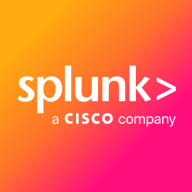

Splunk Enterprise Security and Stellar Cyber Open XDR compete in the cybersecurity domain. Splunk is preferred for its analytical capabilities, while Stellar Cyber is noted for its threat detection features. Splunk leads in pricing satisfaction due to ROI on data insights, but Stellar Cyber's features justify its cost, making it a strong contender.
Features: Splunk Enterprise Security provides real-time insights, customizable dashboards, and detailed data analytics. Stellar Cyber Open XDR covers automated incident response, threat detection, and broad coverage, emphasizing proactive security measures without extensive technical setup.
Ease of Deployment and Customer Service: Splunk Enterprise Security involves a complex deployment that demands significant resources and expertise, while Stellar Cyber Open XDR offers a straightforward cloud-based setup reducing deployment time and complexity. Stellar Cyber customer service is noted for its responsiveness, contrasting with Splunk's more intricate support, which could challenge buyers with limited IT resources.
Pricing and ROI: Splunk Enterprise Security has a higher setup cost but delivers significant ROI via its data insights. Stellar Cyber Open XDR is more cost-effective with quicker deployment, focusing on ROI through strong threat management, making it a better option for budget-conscious organizations.
| Product | Market Share (%) |
|---|---|
| Splunk Enterprise Security | 9.2% |
| Stellar Cyber Open XDR | 1.4% |
| Other | 89.4% |


| Company Size | Count |
|---|---|
| Small Business | 110 |
| Midsize Enterprise | 50 |
| Large Enterprise | 257 |
Splunk Enterprise Security delivers powerful log management, rapid searches, and intuitive dashboards, enhancing real-time analytics and security measures. Its advanced machine learning and wide system compatibility streamline threat detection and incident response across diverse IT environments.
Splunk Enterprise Security stands out in security operations with robust features like comprehensive threat intelligence and seamless data integration. Its real-time analytics and customizable queries enable proactive threat analysis and efficient incident response. Integration with multiple third-party feeds allows detailed threat correlation and streamlined data visualization. Users find the intuitive UI and broad compatibility support efficient threat detection while reducing false positives. Despite its strengths, areas such as visualization capabilities and integration processes with cloud environments need enhancement. Users face a high learning curve, and improvements in automation, AI, documentation, and training are desired to maximize its potential.
What Are the Key Features of Splunk Enterprise Security?In specific industries like finance and healthcare, Splunk Enterprise Security is instrumental for log aggregation, SIEM functionalities, and compliance monitoring. Companies leverage its capabilities for proactive threat analysis and response, ensuring comprehensive security monitoring and integration with various tools for heightened operational intelligence.
Stellar Cyber Open XDR delivers an advanced, unified security solution designed for real-time threat detection and intelligent response, reducing complexity by integrating multiple tools into a single interface.
Stellar Cyber Open XDR aggregates security data from many sources to provide comprehensive threat detection and response capabilities. It offers a streamlined, user-friendly experience, allowing teams to efficiently manage incidents. By automating routine security tasks, it enhances operational efficiency and increases visibility across the entire network infrastructure.
What are the key features of Stellar Cyber Open XDR?
What benefits or ROI should users expect?
Stellar Cyber Open XDR is implemented across various industries, including finance, healthcare, and retail, offering tailored security strategies suited to industry-specific challenges. Organizations can take advantage of this integrated approach to align security operations with industry regulations efficiently.
We monitor all Security Information and Event Management (SIEM) reviews to prevent fraudulent reviews and keep review quality high. We do not post reviews by company employees or direct competitors. We validate each review for authenticity via cross-reference with LinkedIn, and personal follow-up with the reviewer when necessary.